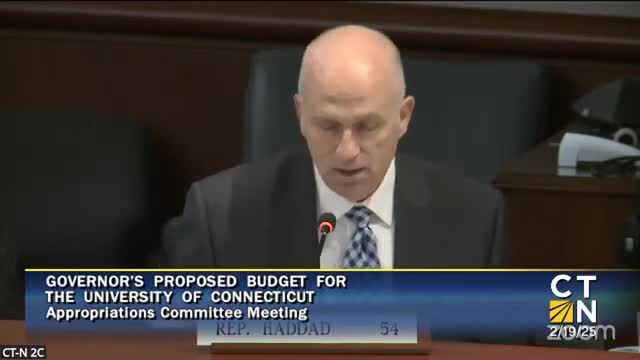UConn officials warn of $35M loss from federal research funding cuts
February 19, 2025 | Appropriations, House of Representatives, Committees, Legislative, Connecticut
Thanks to Scribe from Workplace AI , all articles about Connecticut are free for you to enjoy throughout 2025!

This article was created by AI using a video recording of the meeting. It summarizes the key points discussed, but for full details and context, please refer to the video of the full meeting. Link to Full Meeting
Senator Schlapp opened the dialogue by highlighting the looming threat to funding sources, which include state contracts and federal grants, particularly those from the National Institutes of Health (NIH). The senator pointed out that a decision made during the Trump administration to cap indirect costs at 15% could lead to a staggering $35 million loss for the University of Connecticut (UConn). This reduction, they argued, would not only affect UConn but could have widespread repercussions across universities nationwide.
The discussion delved into the significance of indirect costs, which are essential for maintaining the infrastructure necessary for research. These funds cover vital expenses such as laboratory equipment, software, and salaries for research staff. As one faculty member passionately explained, these costs are not frivolous expenditures but rather critical components that enable scientific discovery and innovation.
The committee members expressed a shared concern that such funding cuts would not only hinder current research efforts but could also deter future scientists from entering the field. The potential fallout extends beyond academia; small and medium-sized businesses that rely on research grants could face layoffs and financial instability, further straining the economy.
As the meeting progressed, the urgency of the situation became increasingly clear. The committee recognized the need for collaboration among universities across the country to advocate for the preservation of research funding. By joining forces, they hope to convey the message that these cuts represent an attack not only on higher education but on the very foundation of scientific progress in the United States.
In conclusion, the discussions at the Appropriations Committee meeting underscored the critical intersection of funding, education, and economic stability. As the committee prepares to address these challenges, the future of research and innovation hangs in the balance, prompting a call to action for lawmakers and educational institutions alike.
Converted from Approps Higher Ed Agency Budget Presentations meeting on February 19, 2025
Link to Full Meeting
Comments
View full meeting
This article is based on a recent meeting—watch the full video and explore the complete transcript for deeper insights into the discussion.
View full meeting
